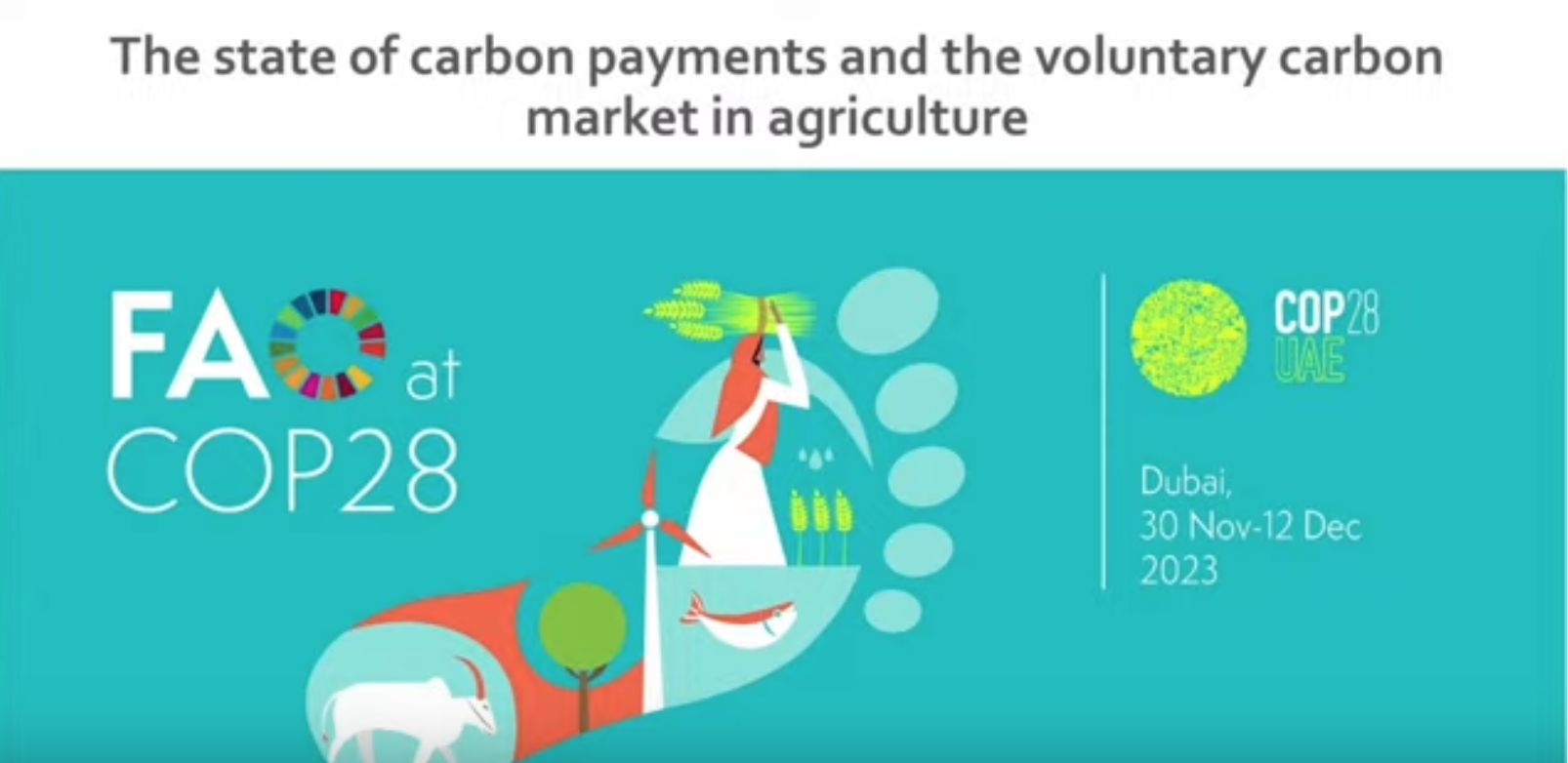
The state of carbon payments and the voluntary carbon market in agriculture summary – 5 Dec
Core message
Event Summary
There exists great opportunity to sequester carbon through the agricultural sector and provide beneficial side effects to contributing to critical SDG goals. Despite increasing interest and the recognized need for innovation and transformation in the agriculture sector, challenges persist due to limited incentives and investments to scale agriculture in the carbon credit sphere. This is especially seen in the untapped potential for agriculture in the Voluntary Carbon Markets (VCM), markets where individuals and organizations buy credits to voluntarily offset their carbon credits.
On 5 December 2023, the FAO and the Alliance of Bioversity International and CIAT co-hosted ‘The state of carbon payments and the voluntary carbon market in agriculture’ side event at the Food and Agricultural Pavilion. The event delved into the results of the first global stocktake of carbon payments and VCM in the agricultural industry which revealed a huge potential for growth in this area and exciting opportunities to better include smallholder farmers. Additionally, the event featured panelists from governmental, private sector and research perspectives, weighing in on what will determine the success of agriculture and food systems in VCMs.
"Agriculture offers an opportunity to tell a story that encompasses Sustainable Development Goals (SDG) benefits and carbon removal, making it a compelling and attractive prospect." - Lini Wollenberg, Climate Action Project Lead, Alliance of Bioversity and CIAT
Key Takeaways
-
The urgency of climate action in agriculture is underscored by the critical need for increased financial support within carbon markets, with current levels falling significantly short according to the latest IPCC report, prompting initiatives like the FAO Food and Agriculture for Sustainable Transition Initiative (FAST) to redirect funds for agrifood system transformation.
‘We cannot just have single point investments [in agricultural voluntary carbon markets], it's about changing landscapes. It really depends on the cooperation between governments, the private sector and local communities.’ - Charlotte Streck, Director, Climate Focus
-
Agriculture's participation in Voluntary Carbon Markets (VCM) reveals a modest engagement, with $9 million in transactions and 20 million credits issued between 2003-2022, representing only 1% of VCM credits. Challenges include a lack of projects in low-income countries, highlighting untapped potential and ongoing efforts to connect with smallholders.
-
Success in VCM for agriculture and food systems hinges on addressing challenges in project integrity, fostering cooperation between governments, the private sector, and local communities, and ensuring benefits for smallholders through eligibility criteria, the role of cooperatives, and prioritizing projects with strong community benefits.
"We have no way but to utilize every available solution within our reach to meet IPCC standards; our path forward necessitates investment in all conceivable solutions." - Martial Bernoux, Senior Natural Resources Officer, FAO
Looking Forward
Agriculture and food systems provide an exciting opportunity to meet the Paris Agreements of keeping the global temperature rise below 2 degrees Celsius. However, there are still logistics that need to be solved in order for agriculture to reach its full potential in VCMs. By focusing on a community and farmer-centric approach, forging greater cooperation between all parties and using the global stock take report as the launching pad for greater investments in agriculture in VCM.
Watch a recording of the full session here.